Ball pythons are possibly the most popular pet snakes in the world. They are also known as “royal pythons,” and are the smallest African python species. The nickname “ball python” comes from their tendency to curl up into a ball when threatened. Their alternate nickname, “royal python” comes from ancient times when rulers would wear the snakes as jewelry. Read on to learn about the ball python.
Description of the Ball Python
These snakes grow to a maximum length of 6 ft., but their average size is around 3 – 4 ft. long. They have small heads and thick, stocky, bodies. In the wild, these snakes usually have a dark brown base, with gold or light brown blotches on the dorsal, or top, side of their body. Selective breeding in captivity has produced a wide variety of color morphs.
Interesting Facts About the Ball Python
While these creatures are popular pets, many people are quite uneducated about the various information and natural behavior of ball pythons. Learn more about these interesting and docile reptiles below.
- Unique Design – Just like our fingerprints, no two pythons have the same design. Each snake’s coloration and pattern is slightly different and unique!
- Motherly Love – Unlike many other reptile species, these snakes use their bodies to incubate and protect their eggs. Females wrap themselves around the eggs to keep them warm and ward off potential predators.
- Long-Lived – Unlike their wild counterparts, pet pythons can live around 30 years on average. The oldest captive specimen lived to the ripe age of 50! When well cared for, these snakes can live much longer than the average person realizes.
- Potentially Invasive Pets – Occasionally these snakes will be found far from their natural range of Africa, in the Florida Everglades! Thankfully they have not established a breeding population like the highly invasive Burmese python. Nevertheless, don’t ever release any pet into the wild if you cannot care for it.
Habitat of the Ball Python
While they are known to adapt to a number of different environments if necessary, these reptiles mainly prefer grasslands, sparsely wooded areas, and savannas.
Females of the species are larger and heavier, and usually live a more terrestrial lifestyle. The smaller males live in a semi-arboreal environment, which means they spend some of their time in the trees, and some on the ground.
Distribution of the Ball Python
The natural range of this species is located in western Africa. They can be found in Uganda, Senegal, Sudan, Mali, the Central African Republic, Guinea-Bissau, Chad, Guinea, Cameroon, Sierra Leone, Nigeria, Liberia, Benin, the Ivory Coast, and Ghana. They can be found occasionally in the Florida Everglades as released pets, but haven’t established a breeding population. This species can also be found in households as pets worldwide.
Diet of the Ball Python
These reptiles are carnivorous, and will feed primarily on small mammals and birds. The gender and age of the snake dictates their primary prey source. As females are located mostly on the ground, they feed mostly on rats, shrews, and mice. Males and young snakes are more arboreal in nature, and feed mostly on small birds.
Ball Python and Human Interaction
It is quite common for this species to interact with humans, as they are commonly kept as pets. In the wild they are not confrontational or aggressive, and do not have conflicts with humans. Because they feed on rodents they are actually beneficial to have around in the wild. They also breed very successfully in captivity, and thus do not have to be taken from the wild.
Domestication
This species may be considered semi-domesticated. They have been selectively bred for color and docile behavior, but not for a long enough period to be considered domesticated.
Does the Ball Python Make a Good Pet
Yes, these snakes can actually make great pets. They are very docile, particularly if handled frequently. As with any reptile, they do have specific care needs that differ from mammals, and you should always do your research before purchasing a pet.
Ball Python Care
Always purchase an animal bred by a responsible breeder, and never purchase a wild-caught animal. The habitat should be just large enough for the snake, and needs to be cleaned and disinfected regularly.
As your python grows, their enclosure should be upgraded as well. Your snake should also be provided with a heat source, and the ambient temperature should never drop below 75º F. Humidity should also be observed and regulated based on the direction of your breeder or veterinarian.
Behavior of the Ball Python
Adult ball pythons are solitary and nocturnal. They prefer having a dark place to hide during the day, and emerge at night to hunt for their prey. In captivity they can be very docile if they are handled frequently. When threatened, both wild and captive individuals will curl up into a ball with their head protected inside.
Reproduction of the Ball Python
These snakes are oviparous, which means that they lay eggs. After breeding, females lay between four and six leathery eggs. She will lay them underground, wrap herself around them, and incubate them for approximately two months. She uses a shivering motion to produce heat to incubate the eggs, and will protect them from potential predators.


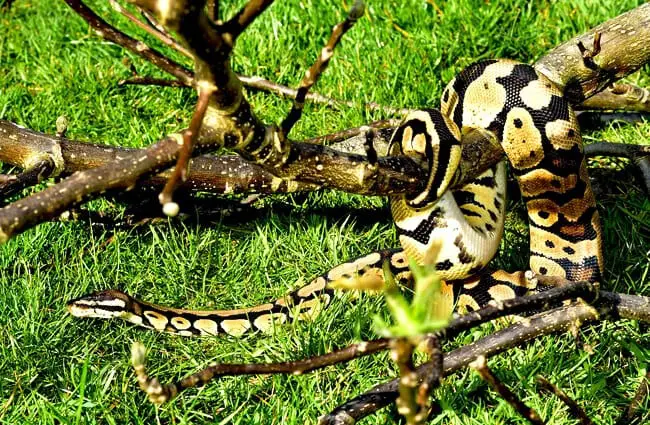
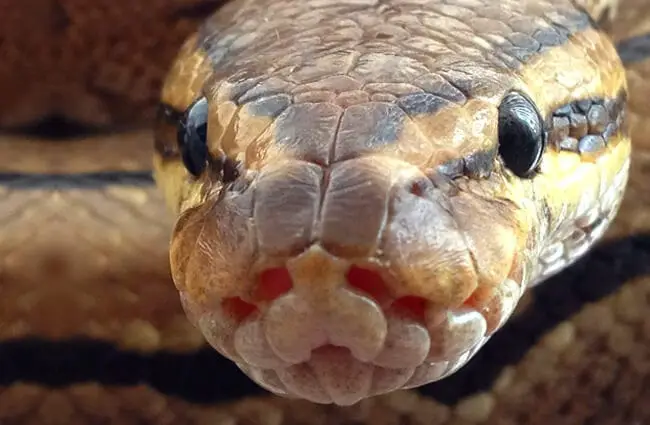
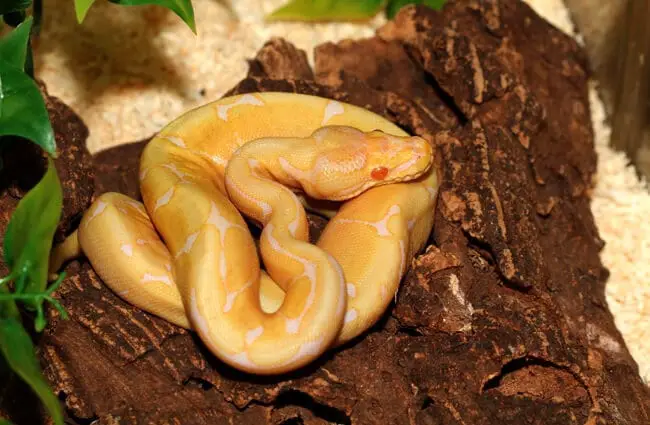

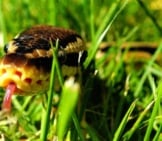
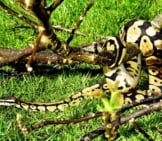

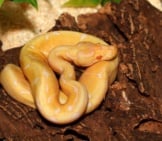

![Red Angus Closeup of a beautiful Red Angus cowPhoto by: U.S. Department of Agriculture [pubic domain]https://creativecommons.org/licenses/by/2.0/](https://animals.net/wp-content/uploads/2020/03/Red-Angus-4-238x178.jpg)












![Red Angus Closeup of a beautiful Red Angus cowPhoto by: U.S. Department of Agriculture [pubic domain]https://creativecommons.org/licenses/by/2.0/](https://animals.net/wp-content/uploads/2020/03/Red-Angus-4-100x75.jpg)

